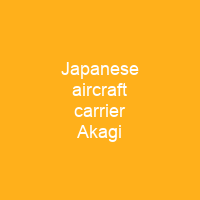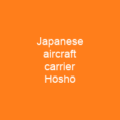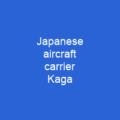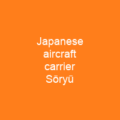Akagi: The Imperial Japanese Navy’s Legendary Aircraft Carrier
Imagine a ship that could transform from a battlecruiser to an aircraft carrier, defying the constraints of naval design and strategy. That’s Akagi, a vessel whose story is as fascinating as it is tragic. Laid down in 1920 with the initial intention of being a battlecruiser, Akagi was later converted into an aircraft carrier due to the Washington Naval Treaty. This ship’s journey from its conception to its destruction at Midway in June 1942 is a testament to the complexities and challenges faced by naval warfare during World War II.
From Battlecruiser to Aircraft Carrier
Akagi’s transformation was not just about changing its role; it was about redefining what a ship could be. Initially, she was built with ten 20 cm guns and dedicated anti-aircraft armament of six twin 45-caliber 12 cm gun mounts. But as the world changed around her, so did Akagi’s design. By 1938, after extensive modernization, she had a single enlarged flight deck, three superimposed flight decks, and an island superstructure. Her dimensions were impressive: 261.21 meters long (857 ft), with a beam of 31 meters (101 ft 8 in) and a draft of 8.08 meters (26 ft 6 in).
Key Battles and Strategic Importance
Akagi’s strategic importance was evident from the moment she joined the Combined Fleet in August 1927. She served as the flagship under Rear Admiral Sankichi Takahashi, but it wasn’t until December 10, 1928 to November 1, 1929 that Isoroku Yamamoto took command of her. This period marked a significant shift in naval strategy, with Akagi becoming part of the First Air Fleet or Kido Butai from early 1941.
Her participation in key battles such as Pearl Harbor, Rabaul, Darwin, and the Indian Ocean Raid highlighted her role as a pivotal asset. The loss of Akagi was a crucial strategic defeat for Japan, contributing significantly to the Allies’ victory in the Pacific. Her sinking at Midway on June 4, 1942, marked a turning point that shifted the tide of the war.
Technical Specifications and Modernization
Akagi’s technical specifications were impressive for her time. She had four Gihon geared steam turbine sets producing 131,000 shaft horsepower, with steam coming from nineteen Type B Kampon boilers or a mix of fuel oil and coal. Her complement totaled 1,600 crewmembers, and she could carry up to 86 aircraft across her three flight decks.
Despite these advancements, Akagi faced several weaknesses in design. The incorporation of aviation fuel tanks directly into the structure of the carrier and the lack of armor protection on the hangar and flight decks were significant vulnerabilities. Additionally, the ship’s fire-extinguishing systems lacked redundancy, making her more susceptible to damage.
Strategic Doctrine and Operations
The IJN’s carrier doctrine emphasized concentration and mass in projecting naval air power ashore. The First Air Fleet (Kido Butai) was formed in April 1941 to combine all fleet carriers under a single command, with Akagi as the flagship for the First Carrier Division. This strategic concept was revolutionary but also had defensive deficiencies that made it vulnerable.
During the attack on Pearl Harbor, Akagi launched two waves of aircraft that attempted to cripple the United States Pacific Fleet. She supported the invasion of Rabaul and provided air cover during the Indian Ocean raid. Her role in these operations underscored her importance as a flagship and strategic asset.
The Battle of Midway
At Midway, Akagi faced its ultimate challenge. On June 4, 1942, she was positioned 250 nautical miles northwest of Midway Island with a combined air raid aimed at Eastern Island. The battle was intense, with American aircraft launching devastating attacks on the Japanese carriers. By 10:26, Akagi had been hit by three bombs, leading to significant damage and fires.
The ship’s crew worked tirelessly to control the spreading fires but were ultimately unsuccessful. At 04:50 on June 5, Yamamoto ordered Akagi scuttled due to damage control efforts being unsuccessful. The ship sank bow-first at 05:20 with 267 men lost.
Legacy and Discovery
The wreck of Akagi was identified using high-frequency sonar on October 20, 2019, at a depth of 18,011 feet. It was found to be largely intact despite significant damage. This discovery provides valuable insights into the history and design of one of Japan’s most iconic aircraft carriers.

Akagi’s story is a poignant reminder of the complexities and challenges faced by naval warfare. From its initial conception as a battlecruiser to its tragic end at Midway, this ship played a crucial role in shaping the course of World War II. Her legacy continues to be studied and remembered, serving as a testament to the importance of strategic planning and the impact of technological advancements on naval combat.
You want to know more about Japanese aircraft carrier Akagi?
This page is based on the article Japanese aircraft carrier Akagi published in Wikipedia (retrieved on November 29, 2024) and was automatically summarized using artificial intelligence.







